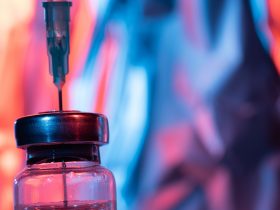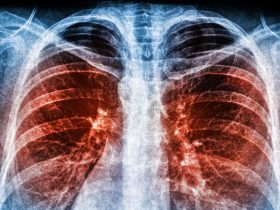Respiratory tract infections (RTIs) are widespread in the community and commonly occur during the first decade of life. Infants, preschoolers and school-aged children come across, on average, three to ten febrile infections per year [1]. The most common causes of RTIs are viral (e.g., Rhinovirus, Influenza and Parainfluenza viruses, Respiratory syncytial virus, etc.) or bacterial (e.g., Streptococcus pneumoniae, Haemophilus influenzae, Mycoplasma pneumoniae, etc.). The differential diagnosis between the two infective etiologies (viral vs bacterial) is often challenging as those two share many common symptoms: fever, cough, respiratory distress, pharyngitis, rhinorrhea, earache, headache, swollen regional lymph nodes, malaise and asthenia.
RTIs require careful pediatric evaluation and while the use of antibiotics is justified in the setting of a bacterial infection, the same therapy is not indicated in the presence of a viral infection. Therefore, a correct differential diagnosis is essential to establish an adequate treatment plan.
In the present study we evaluated children who came to our attention in the ED, with respiratory tract infections, without obvious signs of bacterial etiology and without other comorbidities, and compared those who underwent a nasopharyngeal swab for the detection of Influenza A and B viruses (IAV and IBV) and Respiratory syncytial virus (RSV) by means of a rapid test based upon the amplification reaction of nucleic acids, to those who did not. Major end point was to evaluate the role and advantages of this method in making a correct diagnosis and, therefore, planning a suitable therapeutic strategy (with consequent reduction in the overall administration of antibiotics).
The Sandro Pertini Hospital in Rome is a general hospital, member of the territorial emergency network as a first level emergency and acceptance department. The catchment area of the hospital includes both the resident population of the district, comprising around 500.000 people, and many non-residents, consisting of around 200.000 people.
The Pediatric Complex Operating Unit belongs to this framework. Its activity covers First Aid services, ordinary hospitalization, nursery, delivery room, Day Hospital, and specialist clinics.
Pediatricians carry out First Aid consultancy activities with direct acceptance of children from 0 to <14 years of age and emergency management, if necessary, in collaboration with other professionals. They also provide consultations to children over the age of 14 up to the age of 18, following the first evaluation carried out by the emergency and acceptance department. The number of accesses to the pediatric Emergency Room in the pre-COVID era was approximately 8000/year, with more than 50% of users displaying characteristics of social fragility (e.g. foreigners, gypsies, low income families, etc.).
The ward welcomes patients with common pediatric pathologies including complex pathologies that require a multidisciplinary approach, carried out in collaboration with the specialists present in the hospital.
For the purpose of our study, we examined the medical records of children (< 14 years old) who consecutively arrived in the Emergency Room of the “Sandro Pertini” General Hospital in Rome (Italy) for RTIs, in the maximal seasonal incidence period of November-to-March of every year between 2016 and 2020. All cases arriving in the emergency room under antibiotic therapy previously prescribed for known or suspected morbidities, children with chronic diseases, those with malformation disorders, and those with obvious signs of bacterial RTIs have been excluded from the study. The signs considered for this last selection were of three different types: clinical and/or instrumental and/or laboratory. More specifically: clinical (otitis, exudative pharingotonsillitis, sinusitis with mucopurulent discharge, lobar pneumonia, lobular bronchopneumonia, pleuritis); instrumental (lung consolidation on Chest Xray); laboratory (complete blood count with white blood cells (WBC) differential, C-Reactive Protein, procalcitonin). Finally among the comorbidities, urinary tract infections were excluded by means of urine dipstick test (if positive for leukocytes and nitrites) and acute infectious gastroenteritis was mostly excluded on a clinical basis, in those children presenting with predominant signs/symptoms of gastroenteritis (i.e. sudden change in stool consistency to loose or watery stools, sudden onset of vomiting, prevalent signs of fluid loss), a positive history of recent contact with someone with acute diarrhoea and/or vomiting, exposure to a known source of enteric infection (possibly contaminated water or food), recent travel abroad. Therefore, our analysis included only infants and children with non-obvious causes of RTIs.
Children have been subdivided according to the following intervals: 2016–2017 and 2017–2018 (Group 1), 2018–2019 and 2019–2020 (Group 2). Children assessed between 2018 and 2020 (Group 2) undertook a nasopharyngeal swab for the detection of IAV and IBV and RSV using a rapid nucleic acid detection test, while those assessed between 2016 and 2018 (Group 1), despite having the same respiratory issues and presenting in the same seasonal period, did not undergo any specific diagnostic test. For statistical purposes, each group was further subdivided according to age (≤12 months or > 12 months). We decided not to consider any patient beyond March 2020 because we believe that their data would have been inevitably conditioned by the events related to the COVID-19 pandemic.
RTI symptoms and their correlated manifestations, considered for the purpose of the analysis, were fever, rhinitis, earache, pharyngitis, cough, lower respiratory tract signs/symptoms (dyspnea, rhonchi, crackles, and wheezes) loss of appetite, vomit, and diarrhea. Loss of appetite, vomit and diarrhea were considered as correlated manifestations only if in association with RTI signs/symptoms. The rate of hospitalization, both in the short observation unit and in the pediatric unit, was also considered. Criteria for hospitalization were: severity of the general condition, fever, age, social fragility, blood tests (complete blood count, procalcitonin, C-Reactive Protein, etc.) and discretion of the caregiver.
Children included in Group 2 have been swabbed using a nasopharyngeal sample collection kit containing a thin swab for elution, to be diluted in 2 ml of sterile physiological solution immediately after collection. The sample workflow consisted in collection, delivery to the microbiology laboratory within one hour from collection, and processing within four hours from arrival to the laboratory. In practical terms, samples were usually delivered to the lab within 15 min from collection and processed within 1 h from delivery. As a consequence, the average waiting time for patients at the ED was 2 h.
For the detection of IAV, IBV and RSV nucleic acids, a rapid molecular method operating on dedicated instrumentation, the ID NOW Instrument (Abbott, California), was used. Every swab was analyzed with three different assays, querying for IAV, IBV and RSV. These assays enable for a multiple automated analysis based upon isothermal nucleic acid amplification technology for the differential and qualitative detection of IAV and IBV nucleic acids, and for the detection of RSV, although the latter assay it is not capable of differentiating between the two antigenic subgroups (A and B) of RSV.
The models, similar to primers, targeting the RNA of influenza A amplify a single region of the PB2 segment, while the models targeting the RNA of influenza B are tailored to a single region of the PA segment. The models targeting the RSV A and B RNAs were used simultaneously, the former amplifying a single region of the non-structural NS2 gene, while the latter being tailored to the nucleocapsid gene N. The molecular signals, identified on a fluorescent basis, were used to specifically identify each target of the amplified RNA.
In general, procedures and therapies have been carried out in accordance with the guidelines proposed by the National Institute for Health and Care Excellence (NICE – www.nice.org.uk) and/or the Italian Society of Pediatrics (https://sip.it – Linee guida). All children, despite the antibiotics therapy and according to individual needs, were treated with Paracetamol and/or Ibuprofen, nasal washes, aerosols with hypertonic solution and/or bronchodilators, corticosteroids and phytotherapic compounds having a soothing effect on cough.
The approval for this study was obtained from the Ethics Committee “Lazio-2”, Rome, Italy (Protocol n. 0107794/2021).








Leave a Reply